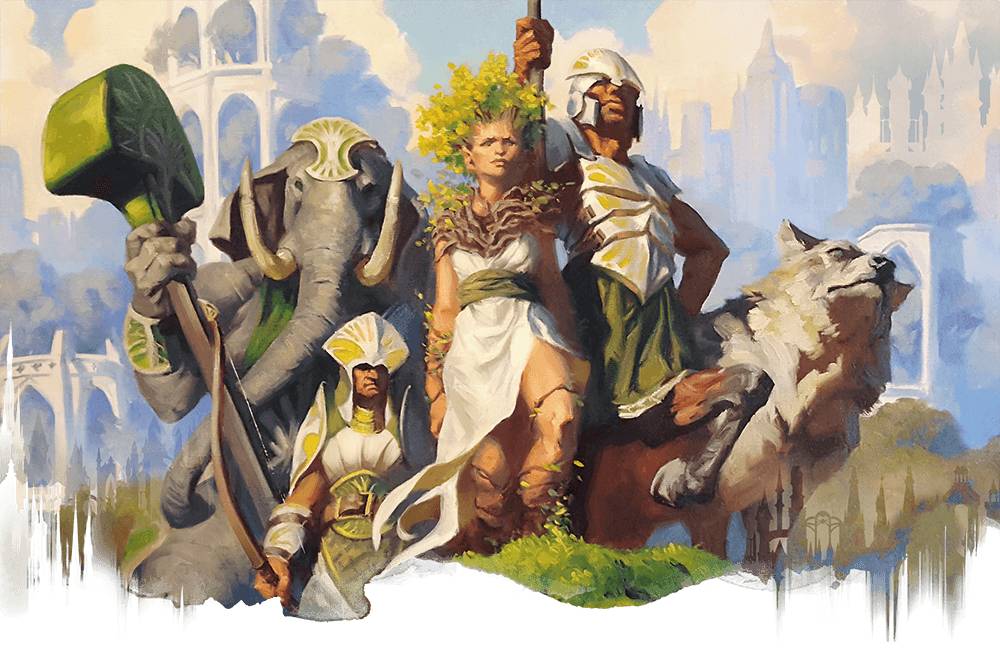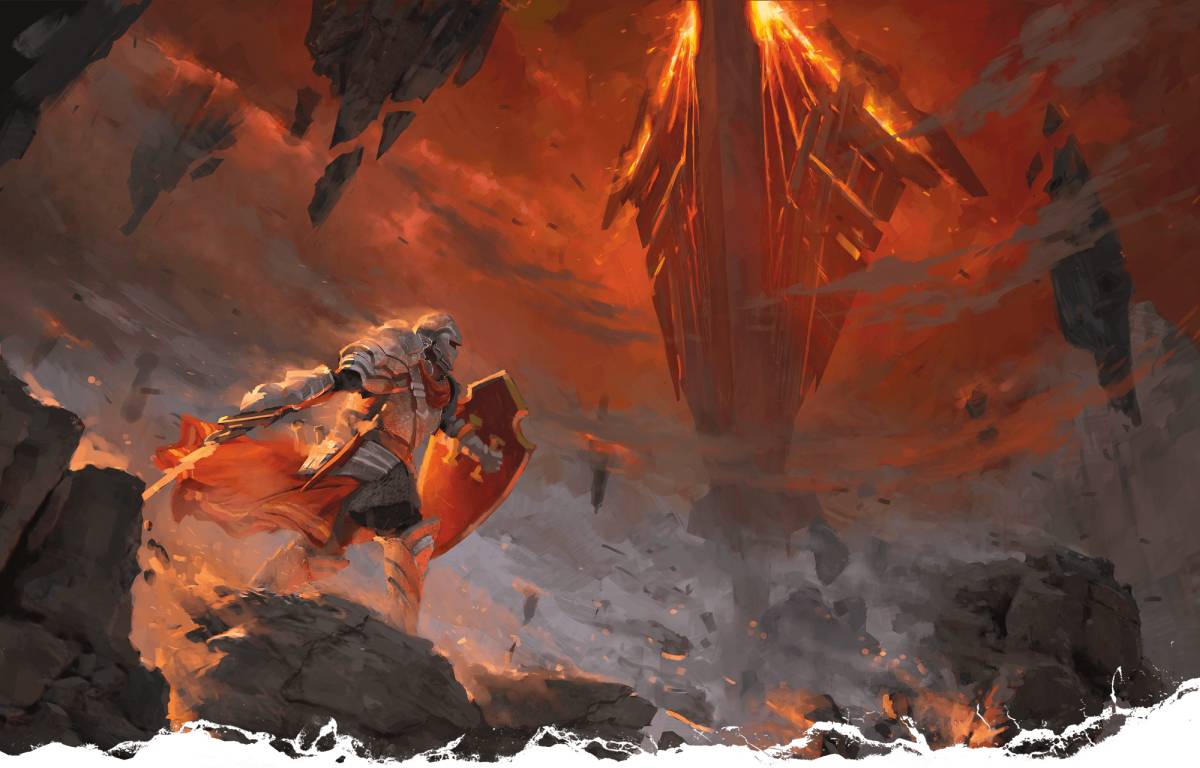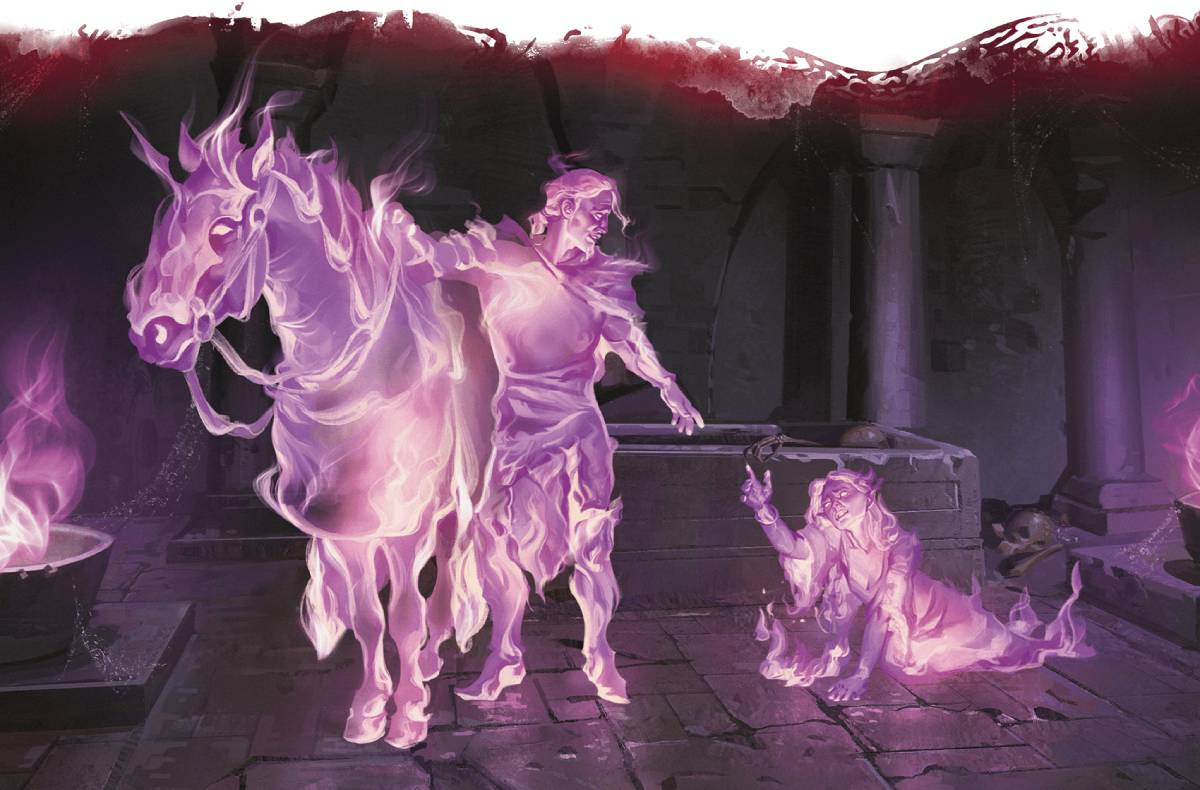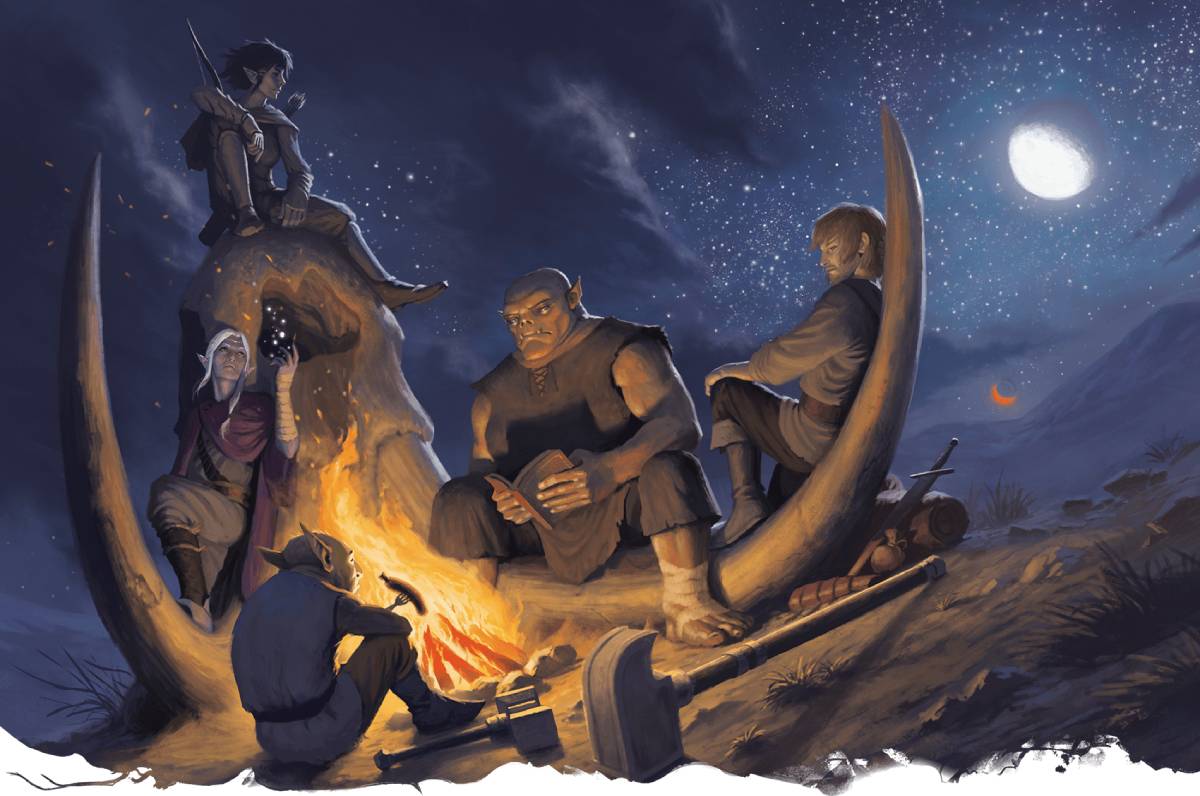


Alignment 101: Different Approaches and Ways to Utilize It in Your Game
Alignment in Dungeons & Dragons is one of those concepts capable of igniting the most fiery of arguments, in part due to the varied approaches to the concept. Is alignment a planar truth, baked into the lore and worldbuilding, or is it simply a roleplaying tool? How can you use alignment in your game? Should we just chuck alignment into the trash?
We'll cover all of this, plus discuss some creative ways to use it at your table. Let's jump in!
What Is Alignment?
Alignment has been a part of D&D since its earliest days and has changed throughout the game's lifespan.
Broadly speaking, alignment describes a creature's principles and outlook on life. It's charted on two separate, contrasting lines, and the center of each lies neutrality—either moral ambivalence or a desire for balance. The axis of good and evil describes a creature's morality, while the pull between law and chaos reflects their outlook on society and order. Put the two lines together, and out comes the alignment charts you've probably seen everywhere.
Within the game, alignment is generally approached in one of two ways: as an indicator of a character's personal worldview; or as a larger force in the setting's cosmology, dictating power struggles against the opposing sides.
Approaching Alignment As a Setting's Cosmic Force
In the early days of D&D, alignment was imagined as a cosmic force that gripped the world. We can see this in the setting planes, for example, which embody deep philosophical truths. Elysium isn't just a place full of celestials who happen to be good, just as the Nine Hells don't simply house creatures with evil tendencies. Those planes and their creatures are, and always will be, the definition of good and evil. A barbed devil, for example, is literally a part of the larger forces of law and evil that fiercely fight against chaos and goodness.

This approach can provide a sense of shared understanding and stability many players enjoy. Players can generally expect certain creatures to act in accordance with the alignment they embody. A red dragon spotted in the distance is bad news. Similarly, no amount of Charisma will convince a being of absolute law, like a modron, to become an agent of chaos. The occasions when a creature strays from its expected alignment are rare and, therefore, a massive deal!
Characters in these games may also have more rigid restrictions and expectations in their class, backgrounds, gods, or patron. Paladins and clerics, for example, are commonly expected to share their deity's alignments. Similarly, a draconic sorcerer who channels the fiery power of a red dragon might not be permitted to be lawful good—the exact opposite of a red dragon's chaotic evil alignment. These restrictions put the cosmic rules into practice, requiring characters to make and embody a philosophical choice. Characters must ally themselves with one of the cosmic courses sweeping through the world and roll with the consequences... So no pressure!
Approaching Alignment As a Character's Morals
Some games eschew the cosmological approach, keeping alignment strictly descriptive of a creature's outlook on life. At these tables, a character's alignment may be used to guide their choices and roleplay and often stems from a personality trait, such as an ideal or a bond. For example, a rogue with the Criminal background idealizes honor and has an internal code of law she follows, and that includes a moral objection to stealing from poor folks just trying to survive. As a lawful good character, this code guides her when she chooses jobs or targets.
In this approach, creatures aren't forever bound by their alignment; when a character makes choices that stray from their alignment, it might shift. If our lawful rogue abandons her internal code, opting into ethically-questionable jobs indiscriminately, the player may decide to shift her alignment toward chaotic.
Using Alignment for Campaign Stories
Alignment can be excellent fodder for stories, and you can tell interesting campaigns with alignment at the core of the story. Here are a few options:
Shades of Gray. Stories centered on contrasting viewpoints on the nature of good and evil are one of my personal favorites. Creatures in a Shades of Gray story don't fit neatly into moral categories, which often leaves characters questioning who or what is evil. For example, a villain engages in seemingly evil actions to bring about change for good. Setting like Eberron and Ravnica, with their many factions and noir intrigue, are perfect for this kind of story.

War of Good and Evil. In a traditional "good versus evil" story, the difference between the two sides is clear, and the dramatic tension lies in the question of which side will win. In Dragonlance: Shadow of the Dragon Queen, for example, there's no question that Takhisis, the Dragon Queen, is categorically evil and must be stopped. Whether good will succeed in defeating her is the question of the campaign. This type of story is a classic for a reason, and there is no shortage of evil creatures in the game for you to utilize.
Chaos Shall Reign. For a twist on the good-against-evil story, substitute the forces of law and chaos. The unending war between devilish law and demonic chaos is a classic option and is explored in adventures like Baldur's Gate: Descent Into Avernus.
Alternative Alignment
If you enjoy the cosmological framework but don't love the game's alignment as written, you can create alternative axes and choose entirely different forces. Simply switch out the traditional alignment forces for a different pair of opposite ideas. I like to choose a philosophy or abstract concept I find interesting and then decide on a contrast. Simple concepts can sometimes be easier to put into play, but the options are truly endless. You can create two axes that intersect or just choose one.
Here are some examples of opposing forces:
- Creation and destruction
- Empathy and apathy
- Growth and decay
- Material and spiritual
- Light and shadow
- Joy and grief
- Esoteric and superficial
Instead of focusing on two sets of competing forces, you could also set up your forces in larger groups. For example, you could use the inner Elemental Planes of Fire, Air, Water, and Earth as your primary cosmic forces. Or if you're a Magic: The Gathering player, you could use its five colors—white, blue, black, red, and green—as your group of forces. The five colleges detailed in Strixhaven: A Curriculum of Chaos are based on opposing color combinations.

Alternatively, create your own group of forces, drawing inspiration from your favorite media. Here are just a few possibilities:
- In Sailor Moon, sailor scouts are aligned with celestial bodies, which represent various virtues, and their choices affect their powers and guide their behavior. For example, Jupiter provides strength, protection, courage, and thunder energy. You could directly take Sailor Moon's planetary and celestial system or build your own.
- Persona offers a different framework, where characters are generally aligned with a mythological figure whose story echoes theirs. This is an excellent option for folks who love mythology. Players could choose from their favorite mythological figures from real world history or write their own entirely. If there is a particular type of story you want to tell, you could guide your players to a set of similar themes, for example, Persona 5's themes around rebellion.
- Creatures in Digimon have crests roughly based on their most prominent positive traits, like courage, destiny, hope, knowledge, or reliability. A D&D world that draws inspiration from here might focus less on positive versus negative traits and instead explore how those traits work together and what it looks like to grow or stagnate in those attributes.
- Shadow and Bone's worldbuilding, apart from their political factions, is built on whether or not you have access to magic and, if so, which kind of magic. You could use the various kinds of magic, Corporalki, Etherealki, and Materialki, as a basis for your world's forces.
Talking About Alignment At Your Table
It's important to talk with your group about your approach to alignment, as even within the same approach to alignment, definitions of its concepts vary considerably. In Dragonlance, for example, the gods of good are concerned with ensuring mortals have the ability to make their own moral choices, and the gods of evil embody power and encourage placing individual desires above communal needs. Contrast this with Exandria, where the Prime Deities of good and neutrality work to maintain the sanctity of life, while the evil Betrayer Gods embrace destructiveness and death.
If you're a Dungeon Master, it's a good idea to define the alignment axis in your setting and describe what those concepts mean to you and your world. Sharing such definitions with your players enables them to make informed decisions for their characters. Getting everyone on the same page reduces the risk of arguments popping up mid-game.
Include alignment in your session zero topics when you begin a new campaign, and if you are mid-campaign, it's perfectly fine to throw a session zero right where you are! Here are some questions you may wish to discuss:
- How strongly is alignment intertwined with your setting and worldbuilding? Do certain creatures strongly represent these intrinsic forces?
- How much agency do various creatures have? Do you assign one alignment motivation to a group of sentient creatures, such as humanoids?
- Are there any restrictions or rules in your world for alignment with classes, races, or backgrounds? How closely must a character's alignment align with their god or patron's?
- How do you view player actions in terms of alignment; what kinds of actions change a PC alignment, and in what timeframe? What are the consequences, if any, for alignment changes?
- How do you view features that interact with alignment, such as the detect evil and good spell? Do you use any magical items that have specific alignment requirements, such as the talisman of ultimate evil and the talisman of pure good?
Do You Even Need Alignment in Your Game?
Alignment can offer a variety of positive experiences, but it’s worth asking this question. If a player at your table finds alignment problematic or overly restrictive, the good news is you don’t need it. Concepts like alignment exist to serve the collective storytelling that happens at your table. If something isn’t enriching your group’s experience of the game, you can collectively choose to toss it aside.
Using Alignment in Roleplay
However you approach alignment, remember that your character is a whole, complex being, and their values go deeper than simply filling in the alignment spot of your character sheet. What truly drives them, and why? How did they arrive at their moral outlook? What kinds of choices have they made in the past, and how have they previously solved ethical dilemmas? To begin to answer these kinds of questions, think about your character's ideals and bonds, and connect them to their ethics.
For example, our lawful good rogue comes from poverty, is deeply committed to her family at home, and idealizes concepts like honor and charity. She expressly steals from wealthy, powerful people to address the imbalanced distribution of wealth in the city—wealth gotten by evil exploitable of vulnerable people. Her strict code of ethics guides who she will steal from and how. She doesn't kill indiscriminately and is careful about who she may affect with her actions. In roleplay, she prefers stealth and information gathering, carefully plans thefts, reduces the risk to innocents, and tries to talk her way out of things before resorting to violence.
- Everyone believes in something, even neutral or unaligned characters. For some characters, it might be valuing balance between all the cosmic forces. For others, it might be an idea of agency or the freedom to choose for oneself.
- When playing characters with strong belief systems, such as lawful good paladins, alignment doesn't allow anyone to behave poorly and excuse it with, "It's what my character would do." We discussed this previously in the roleplaying villainy article, but it also applies more broadly. Lawful good, for example, doesn't always equal lawful foolish; a lawful good character doesn't follow every rule without considering consequences for their fellow adventurers, or they won't have fellow adventurers for long! Remember to remain respectful of your fellow players, regardless of your character's alignment, and work as a group of players seeking to have fun together.
- If disagreements arise—like a perceived mismatch between a character's alignment and actions—discuss it calmly and kindly. Often such disagreements can be remedied by seeking clarification about the character's motivations or checking for misunderstandings. DMs should be cautious not to override a player's agency in making choices for their own characters. It can also be helpful to revisit the campaign's alignment definition and make changes to clarify as needed.
Align Yourself
Alignment can provide a valuable framework for character building and roleplaying, as well as an arrangement of cosmic forces for your larger world's tension. As a concept, it is flexible, allowing you to choose an approach that works best for your table and the story you're telling together. Outline your definition of its concepts, and discuss it with your fellow players to ensure everyone is on the same page. Ultimately, regardless of your chosen approach, alignment exists to serve the collective storytelling happening at your table and enrich the fun experience for everyone.
By ALYSSA VISSCHER
Made with GM Binder
www.gmbinder.com

Alignment 101
Alignment in Dungeons & Dragons is one of those concepts capable of igniting the most fiery of arguments, in part due to the varied approaches to the concept. Is alignment a planar truth, baked into the lore and worldbuilding, or is it simply a roleplaying tool? How can you use alignment in your game? Should we just chuck alignment into the trash?
We'll cover all of this, plus discuss some creative ways to use it at your table. Let's jump in!
A DUNGEONS & DRAGONS supplement
for both DMs and players
For use with fifth edition
Player's Handbook, Monster Manual,
and Dungeon Master's Guide
DUNGEONSANDDRAGONS.COM

